
I was completely blown away when I first read Karrie Higgins’s essay, “Strange Flowers,” which was recently listed as a notable essay in Best American Essays 2015. “Strange Flowers” merges various kinds of texts—transcripts, childhood drawings, photographs, even texts that seem imbued with magic—in order to talk about her strong connection to her brother, who molested her throughout her childhood. The story unfolds in the documenting of evidence; by presenting the facts, Karrie allows the reader to come to their own conclusions. The resulting texts evoke, without being sentimental. They challenge, perplex, sadden, frustrate, and ache, without telling you to feel any particular way. In a world where narratives recounting trauma are flattened into stories about resilience and healing in order fit into a particular market-niche, Karrie’s work reminds us that our experience of trauma is deeply complex, and that chronicling our stories is not just about finding personal redemption. It’s about making sense of what’s left of the evidence of the things that happen to us, and it’s about waiting for the universe to reveal itself, or tapping into the magic that allows that world to be cracked open.
***
The Rumpus: Thank you so much for taking the time to chat with me today about your work. I’ve been such a big fan since I read “Strange Flowers,” which was recently listed as a notable essay in Best American 2015.
Karrie Higgins: Thank you for inviting me and for the kind words.
Rumpus: Of course—one of the features of your work that I was especially interested in is the way you fuse different genres. Could you tell me a little bit about your writing process?
Higgins: Sometimes it is hard for me to separate my writing process from my lived experience because so much of what I do is immersive research or experiment. My process is rooted in place, so it starts with psychogeography. I take long walks, make maps, investigate histories of blocks, and treat graffiti as prophecy. I let cities convert me. I mean, that’s the reality of the body: it is not a ‘black box.’ Place changes you epigenetically, alchemically, atmospherically, and imaginatively—and likewise, you change place, too. Even epigenetically, if you consider the city grid a genetic code.
I’ve been writing about that a lot lately for Salt Lake City, as city planners attempt to alter the grid to make it friendlier to biking and walking: these are epigenetic changes to the holy grid. Or how Utah built that Union Pacific Bridge across the Great Salt Lake and wound up dividing it into two distinct ecosystems. That’s an epigenetic change.
I research compulsively and constantly, especially scientific studies. I’ve always been this way, so I don’t know why I started it, but it is part of my process. My brain is like a scientific curiosity cabinet, and it gets into the writing because I can’t help but connect things. I subject myself to experiments, which might seem performative because they arise out of the writing process, but they are also sincere and true. I learned to make inks, age them, and forge handwriting, which I did to get inside the mind of this Mormon forger I am writing about, Mark Hofmann. Except it started to change me. The first thing I wrote in my homemade iron gall was: What would I forge if I could never get caught? The answer is my brother’s confession. I wrote myself into a forger!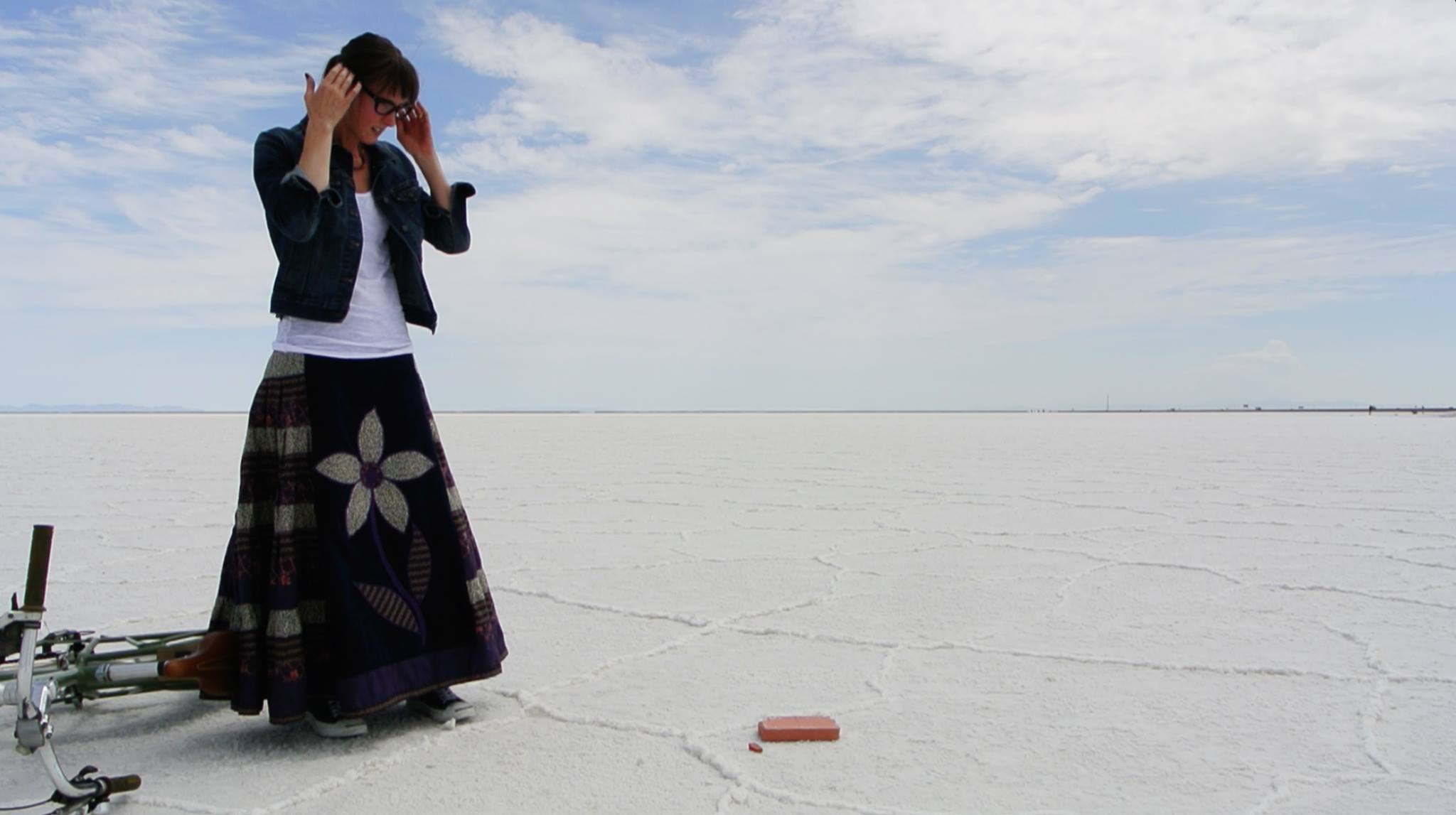 I took a lie detector because Hofmann did. I underwent hypnosis because he was a master at self-hypnosis.
I took a lie detector because Hofmann did. I underwent hypnosis because he was a master at self-hypnosis.
I’ve learned ancient magic because Joseph Smith was into ancient magic. I call them experiments, but they are really compulsions. Even as a little girl, I did that. I took blood samples from dead birds in the yard or friends when they got hurt and looked at them under my toy microscope. I keep little investigation notebooks with rough notes, maps, diagrams, magic spells, experiments, etc. It takes a very long for them to start to feel like I’m “onto something,” and that’s when an essay begins. When I’m actually in process on writing, I obsess over structure and tend to rearrange the little fragments over and over. I work in total and complete chaos, often running in circles with new experiments and research. I’m always down the rabbit hole. No outlines. Outlines are my nemesis; my brain literally cannot process them. I know when the structure is right because… it’s right. Basically, my process is also my life. They’re not separable
Rumpus: I get that sense when I read your work—that it is a visceral experience, in addition to an intellectual one.
Higgins: That’s a good way to put it. I don’t try to explain it or in any way make meaning out of it for the audience. I try to convey what it’s like to process the world this way.
Rumpus: Have you always approached writing in this way?
Higgins: Definitely not. Well, maybe that’s not true. I used to write mostly poetry, and an undergrad poetry workshop at the University of Iowa ganged up on me and told me I was an essayist, not a poet. It intrigued me, so I turned my poems into essays. That was my process at first. I remember when I first started doing this forensic process. It was my second creative nonfiction essay that I ever felt like I “finished,” so I guess I did always do it. I was writing about a woman who went missing when I stumbled across the art of forensic facial reconstruction, and I realized: This is what I’m doing. I’m trying to put flesh on this skull, and I’ve got so little to go on. I became obsessed with the idea of writing as a forensic art—a liminal epistemology between science and art, evidence and speculation. I started to build my process around recreating this internal adversarial process on the page. It felt like what happens in criminal cases, and I wanted to eliminate the logic and just let that process do what it can do.
I modeled it on Karen T. Taylor’s textbook Forensic Art and Illustration, and to this day, she is one of my biggest influences. I took her forensic facial reconstruction class recently, this time with a more magical approach to it.
Rumpus: How is it a more magical approach?
Higgins: Well, when I first started writing “forensically,” I thought forensic science was going to be THE way for me to understand the world and convey what was happening inside my head. This constant push-pull and intense desire to expose reasonable doubt—a kind of confidence in doubt as the only viable narrative. When I got to Utah and started embracing the more magical elements of Mormonism, I started to think differently about forensics. I began to conflate belief and knowledge,  the way the Mormons do with their concept of “testimony.” I started to think of forensics alchemically. During my sculpture class, I kept thinking, “I am doing what Ezekiel did in the Valley of the Dry Bones. I am giving flesh to bones again.” When it was over, I said to my husband, “Do you know what I got out of that? Empathy for God.” And I don’t even know if I believe in God, but that’s what I felt. I mean, this isn’t exactly a “scientific” approach to forensics. And that’s the space where I am working now, with the ancient scientists and alchemists, who aren’t so different from me: I am trying to create a magical forensics. The only difference is, the science is more advanced, and magic is not accepted as “real” in our time.
the way the Mormons do with their concept of “testimony.” I started to think of forensics alchemically. During my sculpture class, I kept thinking, “I am doing what Ezekiel did in the Valley of the Dry Bones. I am giving flesh to bones again.” When it was over, I said to my husband, “Do you know what I got out of that? Empathy for God.” And I don’t even know if I believe in God, but that’s what I felt. I mean, this isn’t exactly a “scientific” approach to forensics. And that’s the space where I am working now, with the ancient scientists and alchemists, who aren’t so different from me: I am trying to create a magical forensics. The only difference is, the science is more advanced, and magic is not accepted as “real” in our time.
I guess what I’m saying is, I have co-opted the machinery of forensics for magical purposes. Or maybe it’s the other way around. In any case, it feels true to how I experience the world.
Rumpus: It sounds like your approach is very self-taught and built of more organic experiences in the world. Did you ever think about getting an MFA, or do you resist more “traditional” approaches to writing?
Higgins: I have an MFA in Creative Nonfiction, from Antioch Los Angeles, and while I got some pushback in workshops about my experiences as an epileptic, I had the most supportive mentors. David Ulin let me go nuts with my process and didn’t mind when I submitted revisions over and over. If anything, he pushed me harder to let my freak flag fly. He is very much part of the DNA of my work the way the best teachers are, and even to this day, I will ask myself, “Would this disappoint David Ulin?” If the answer is yes: TRY AGAIN.
On the same token, I don’t understand traditional forms, at least not from a process standpoint. I “get” what they are doing, but my brain doesn’t think that way. I can write those kinds of essays, but they don’t excite me or fulfill me.
The way I approach my work very much comes out of my art historical background—Fluxus, the Situationists, Abstract Expressionists, De Stijl, Malevich. All of those movements influence me because I don’t tend to see writing as “writing.” I tend to see it as an arena for “performance” of a process. So to me, when I am writing, I am not trying to fit the work into a traditional, textual form so much as I am trying to make the text perform something. The forensic process works there, too, because all forensic processes are a type of performance—an agreed-upon process for settling on “truth,” even though it’s highly questionable at best. I have a background in criminology studies as well, so I draw from that. I wouldn’t say I resist more traditional approaches to writing, though to me, they feel alien and strange, which I think goes to my weird neurology, too.
I think the performance aspect also accounts for why I use so many visuals. I don’t tend to think, “How can I write this?” I tend to think, “How can I get this into evidence?” Like in court. I want the immediacy and not too much logic connecting things. Let the readers be a kind of jury.
Rumpus: I get that sense from your work as well—you allow for a lot of ambiguity, so that the reader can “make sense” of the evidence and also read into and interpret the text in myriad ways. I was especially interested in this as a way to approach writing about trauma.
Higgins: I live for ambiguity. That’s what makes a story come alive. I am always suspicious of certainty… Like HOW can it be so clear to you? And then I have a million questions. Because nothing is ever clear to me. I think it makes people uncomfortable when I convey that about traumatic experiences because it’s not the “accepted” narrative, but there it is.
Rumpus: One thing I’m wary about for trauma narratives in particular is how mainstream media sometimes picks them up as PSAs, which obviously kind of flattens the experience quite a bit.
Higgins: Oh god, yes.
Rumpus: Do you think there is a single “accepted” narrative for trauma?
Higgins: I don’t know if there is a single “accepted” narrative, but I am learning there is a single “acceptable” way to process it: writing as catharsis and healing. I not only resist it, but I find it totally alien to my experience. For me, it’s neither cathartic nor healing, and I don’t want it to be. I am not in this to be fixed.
Rumpus: Do you hope that readers gain something from reading your work? Or does it simply feel like a necessary task?
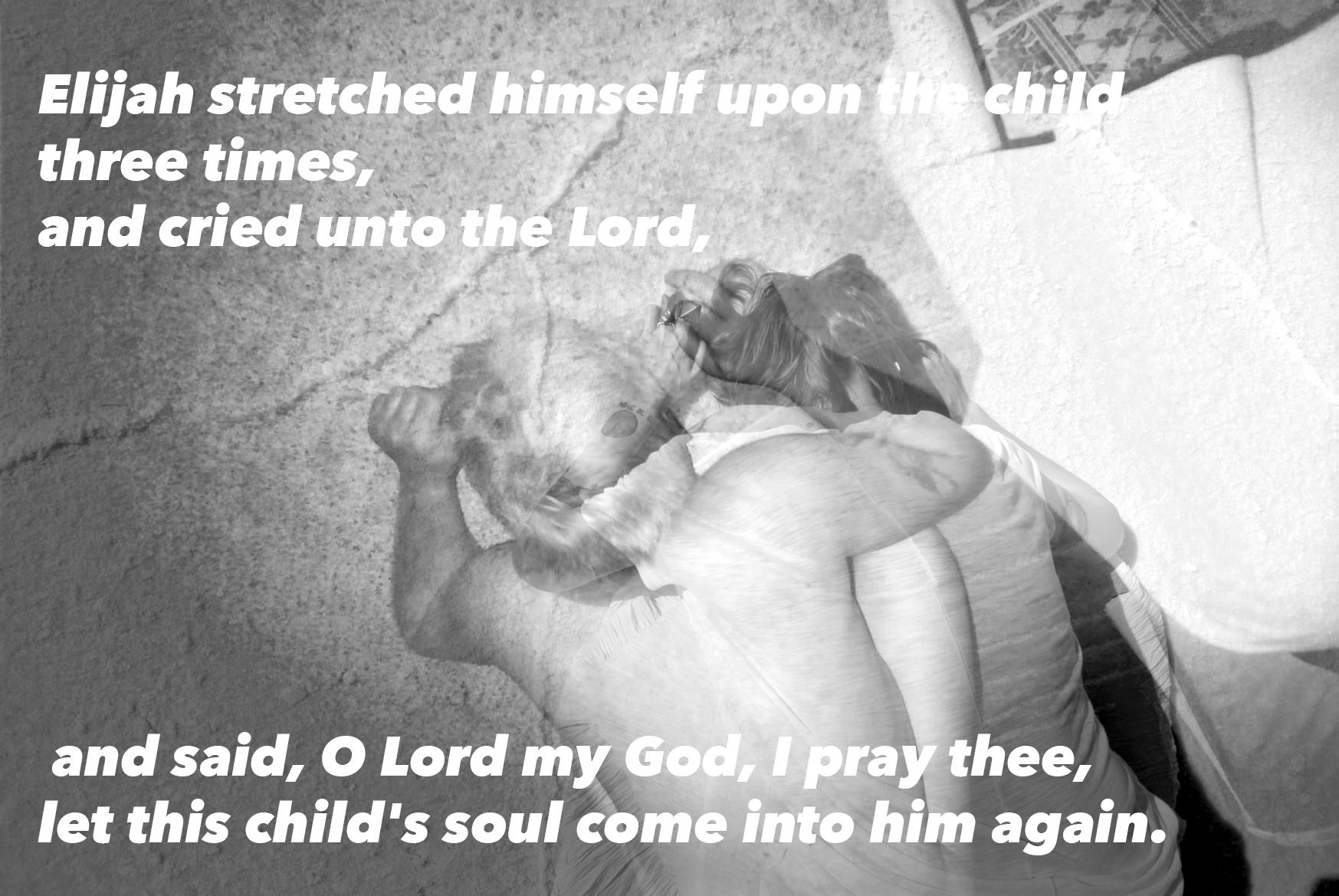 Higgins: I actually feel nothing when I am writing. My brain is like a wind tunnel, empty … nothing. The only exception is when I’m manic and I think I’m picking up signals from Saturn or something. Then I’m hyper-emotional, but I consider it my “alter ego.” I spend a lot time “translating” her wild ramblings into semi-coherent things. Because those manic states are memories. They are experiences. They are part of me… But the writing gets done in the wind tunnel. I write because it’s compulsive. I can’t help it. It’s how I research, too: totally compulsive. I don’t know what I hope to get out of it except that I know it’s the only way I have ever been able to make sense of anything.
Higgins: I actually feel nothing when I am writing. My brain is like a wind tunnel, empty … nothing. The only exception is when I’m manic and I think I’m picking up signals from Saturn or something. Then I’m hyper-emotional, but I consider it my “alter ego.” I spend a lot time “translating” her wild ramblings into semi-coherent things. Because those manic states are memories. They are experiences. They are part of me… But the writing gets done in the wind tunnel. I write because it’s compulsive. I can’t help it. It’s how I research, too: totally compulsive. I don’t know what I hope to get out of it except that I know it’s the only way I have ever been able to make sense of anything.
Rumpus: So this comes back to the idea of logic in your work. Presenting evidence.
Higgins: Exactly. I am always down some rabbit hole or another of my alter-ego mind, finding these strange connections from the compulsive research cabinet in my brain. Looking for evidence.
I pretty much treat every experience as a crime scene.
Rumpus: I know something that you’ve been working hard to raise awareness about is the need for greater inclusivity in the writing world—for those who aren’t neurotypical or who have a disability. Your unique way of seeing the world really seems so foundational in your ability to create amazing art. Why do you feel there is push back to embracing these different ways of seeing and experiencing? Do you think it’s possible that the culture will change?
Higgins: I think it comes down to a couple of things. First, people with a more “typical” neurology may not even realize their biases. For example, I wrote a piece about the history of one block in Salt Lake City, and I wrote it as prophecy, so all these magical things were happening. It was completely fact-checkable in the old newspapers, every single detail. And yet, I connected things in a way that seemed “magical” or “prophetic.” Editors suggested I seek psychiatric help. Finally, one accepted it.
Those first editors probably didn’t realize their own bias in assuming insanity. They probably thought, “WTF is this? Some conspiracy theory whacko?” Without realizing that I was, in fact, directly translating a way of seeing history—a completely legitimate approach to history. I mean, that piece had stuff like the Angel Moroni and the devil stealing a skull from the excavation site. A skull actually did disappear from the site, but do I believe the Angel Moroni and Lucifer stole it? No. Do I think it is true? Yes. And I think that because I first experienced it in intense mania, and now that’s how I see the block. The more narratives that approach reality “differently” get treated as “insane” or “unreal,” the less readers are exposed to them, and the more “unreal” or “insane” they seem. It’s like a feedback loop.
I also think there is an element of controlling the narrative. If I am constructing a narrative in a way that resists being “fixed,” it’s threatening to the status quo. It suggests that neurotypical brains are not, in fact, superior. I don’t think this is conscious on editors’ or readers’ parts, but if they cede control of “acceptable” narratives it does usurp some power.
Rumpus: What upcoming projects are you working on?
Higgins: Right now, I am writing a grimoire/environmental memoir entitled Superman is My Temple Recommend, a twist on the ex-Mormon saying, “Jesus is My Temple Recommend.” It’s a textbook of magic that draws from Mormon theology, pollution science, environmental epigenetics, alchemy, Saturn Death Cult cosmology, theodicy, psychogeography, ancient magic, criminology, memory research, and of course, forensic science.
The ultimate goal is to write my brother into eternal life (which I sometimes believe in, and sometimes don’t) by incanting a magic spell for his atonement for his crimes. It’s an Isis and Osiris story, my own personal Book of Breathings: I am gathering his corpus delicti, like Isis recovering Osiris’s body parts along the Nile. The Book of Breathings, of course, is a huge part of Mormon theology because Joseph Smith owned papyri portraying this funerary text and “translated”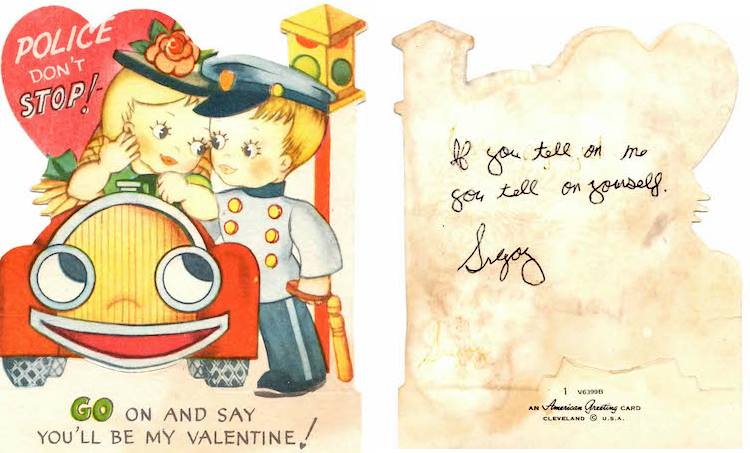 it into the Book of Abraham. Technically, he got the translation wrong, but in many ways, he got it so right.
it into the Book of Abraham. Technically, he got the translation wrong, but in many ways, he got it so right.
I see myself as very much like Joseph Smith. He built a whole religion around grief for a lost brother. His big brother Alvin died in 1823, not long before Joseph got the golden plates. Years later, Joseph had a vision of Alvin in the Celestial Kingdom. How could that be, if he died before baptism into the restored Church? Soon came the revelation of posthumous baptisms and the priesthood keys to seal families together on heaven as on earth. Some people speculate that Joseph Smith was a temporal lobe epileptic, and it makes sense to me because I am one, and part of my “symptomology” is an obsession with religion.
Joseph didn’t want to lose his brother, plain and simple. Neither do I. I “get” what Mormonism is about, at its core, and that’s why I almost converted, as I portrayed in my essay, “Strange Flowers.”
I got into ancient magic because of Joseph Smith, but I got there circuitously, through the forgeries of Mark Hofmann, who attempted to embarrass the Mormons with forged letters depicting the Prophet’s money-digging activities. I got to Mark Hofmann because of Ronnie Lee Gardner’s firing squad execution and articles in the local paper about blood atonement. Blood atonement fascinates me because it’s a way to take atonement into man’s hands. It’s physical, alchemical even—or at least in the theology I’m creating. This all happened very shortly about my brother’s death, so timeline-wise, it’s all the same event to me.
At this point in the process, I am working on an epigenetic magic resurrection spell, which also stems from Mormon thought. In his Mormon theological text Rube Goldberg Machines, Adam S. Miller wrote,
The body, despite its motility, has no clean edges, no hard lines. Instead, it bleeds out beyond this fragile, porous shell of skin and hair into the fabric of the world around it, just as the world around it simultaneously bleeds back into the flesh, fiber, and blood of the body itself through respiration, digestion, and sensation. Disconnected from air, food, water, and sensation, a body is not a body. As a result, to successfully resurrect a body, one would have to successfully resurrect a world.
So I set about resurrecting a very particular world: It started with my forgeries. I am forging my brother’s confession, and I started to think about the chemistry of the inks and how to make the magic happen there, physically. Then I took it into my body with my tattoos, which are a kind of personal Mutus Liber, an alchemical text. The inks contain the same pollutants as the air in Salt Lake City, and they inflict the same sorts of damage, epigenetic and otherwise. Like my asthma, it’s the Kingdom of God inside me. My rose tattoo reproduces my brother’s and it actually contains pigments used in automobile paints, as well as the same pollutants spewed from car tailpipes. Since my brother was a total mechanophiliac about his Pontiac GTO, it means I am the embodiment of this object of his fascination. Porous boundaries again: no distinction between inner and outer worlds.
I tracked down my brother’s childhood, high school, and other friends, and I am keeping an experience notebook where I attempt to recreate his experiences: teaching myself parachute landing falls, reproducing his rose tattoo so I have the memory of tattoo needles cutting that shape into me, learning his secret nicknames, learning everything I can about the Pontiac GTO, all of it.
Ultimately, this all builds toward an epigenetic/body forgery that I hope can lend authenticity to the confession I forge and save my brother’s soul. I can’t go into certain aspects of it yet, but it can only be completely finished when I die. I have plans for my body that will complete this magic spell.
Rumpus: That sounds like a great deal of research. Is it painful or confusing talking to those people who knew your brother?
Higgins: Memories have epigenetic mechanisms, so I am making myself more like my brother—genetically, physically—by stealing his memories. That’s where it gets super confusing, because the more I inhabit his world, the less I am sure about mine. Is it my brother or I experiencing something? Is it his memory or mine? Is it his rationalization or mine? I mean, I invited him to possess me, in a way.
Sometimes, I feel like I am grooming myself. For example, I am in touch with one of my brother’s best friends, and we have the most bizarre dynamic. I mean, I found myself wanting to text him sexy pictures because he asked for them, so that says a lot. But it’s not what it seems. He and I are projecting all kind of things on each other: To me, he is so much like my brother that I will listen to anything he says, even stuff that should be infuriating, and it’s the most amazing feeling. Like I’m whole again. 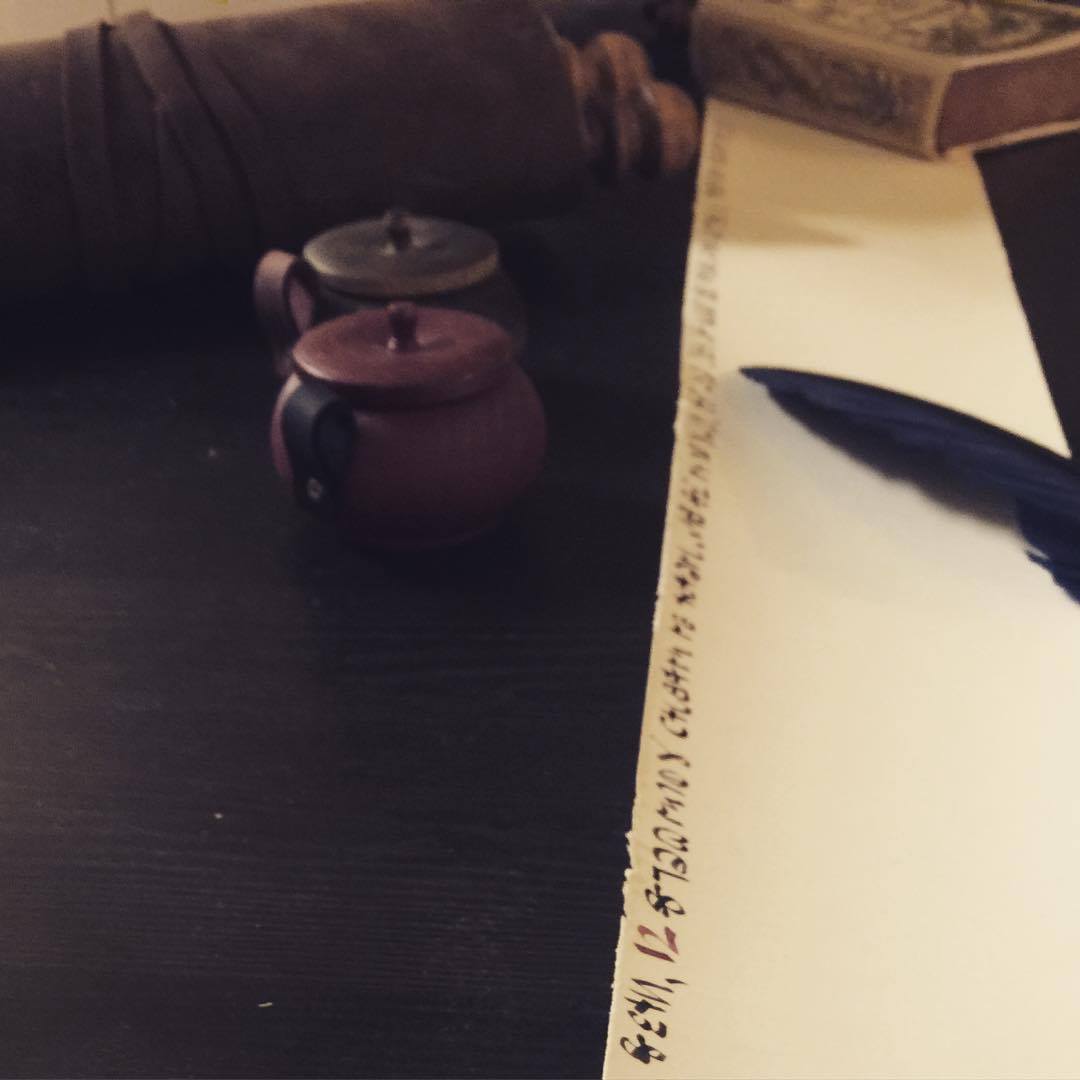 And he will say things like, “You laugh like your brother” or “You’ve got a little of your brother in you” and I can’t stand it how happy it makes me.
And he will say things like, “You laugh like your brother” or “You’ve got a little of your brother in you” and I can’t stand it how happy it makes me.
Or I have a performance coming up where I re-enact my brother’s death, and having seen the crime scene photographs and read all the reports and interviewed a whole lot of people, I know the Medical Examiner narrative is questionable. So I sewed a costume of fabric printed with his police booking photograph, and I’m going to roll off the couch over and over the way he supposedly did. I have superimposed photos of me in his body’s position as found in his apartment with his actual death scene photos. It’s… I mean, there are no words for that. Seeing our bodies that way.
But that’s part of memory, too. Nobody really knows but him. So I am trying to figure it out. If I know the ultimate secret—how he died—how can I be distinguishable from him?
But then I find myself having these thoughts, like, “Wait. Was I really just confused? Did my brother not actually abuse me?” And the further I go down this rabbit hole, the more I have those thoughts. Which means: the magic spell is working. So I guess I am learning there are consequences to resurrection, and that if I resurrect him, I have to accept his world. I can’t do it on my terms. What does that mean for my experiment? I don’t know.
I’m also working on stuff about Mormon forger Mark Hofmann, who I adopted as a proxy brother, and a project about my resemblance to Virginia Woolf. A Zion Tarot. A weird theory about the Saturn moon Titan—that one came from “alter ego Karrie,” who keeps me busy.
Rumpus: These sound like such interesting and important projects. Do you talk with your family about your writing at all? I know different families respond so differently to sexual abuse, and your brother, even after his death, is such a major person in your life, if I understand correctly.
Higgins: He is a major person. I don’t talk very much with my family about my writing, or anything at all. Sometimes, I do share documents or other things with my sister, though. I did tell my family right away when I found out my brother had died facing trial. I texted my mother and sister, and they both responded, “How old was the victim?” We had waited a long time for that kind of vindication. I considered keeping it secret, but I couldn’t.
I do share with my husband, who is incredibly supportive in spite of how strange the work can be. I don’t know how he puts up with me sometimes.
Rumpus: You speak about writing as a kind of compiling of evidence.
Higgins: Yes, exactly!
Rumpus: I know you aren’t interested in writing as catharsis. Are you interested in justice?
Higgins: That’s THE question, I think, because if I am treating my work as this performative arena for forensics, isn’t it a little like a vigilante trial? I think I am seeking justice, in a way, but not the kind people expect.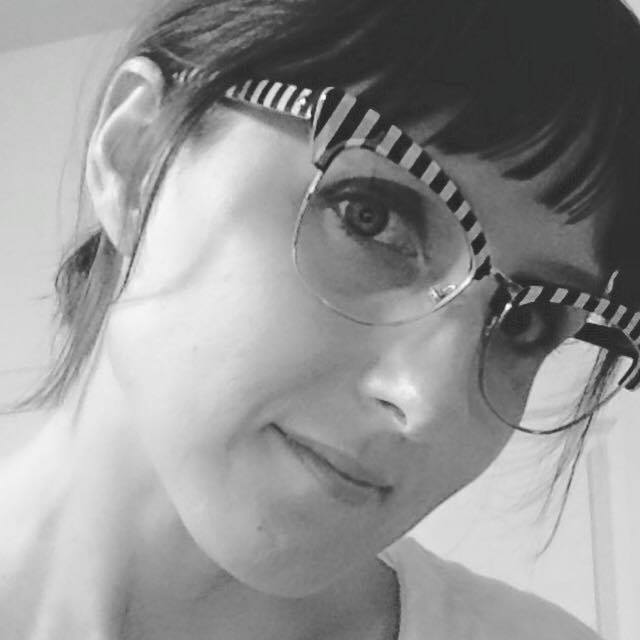 It’s not about my brother getting demonized (and I never wanted him in prison) or even about me being believed. I feel like it’s about a bigger kind of justice, and that’s why I latched onto this epigenetic forgery. I want my brother to be redeemed, and I don’t know any other way to do that but to drag this stuff into the light. I’m forging his confession not to exact revenge but to save his soul. (And yet, I don’t believe in God. Or maybe I do. I don’t know.)
It’s not about my brother getting demonized (and I never wanted him in prison) or even about me being believed. I feel like it’s about a bigger kind of justice, and that’s why I latched onto this epigenetic forgery. I want my brother to be redeemed, and I don’t know any other way to do that but to drag this stuff into the light. I’m forging his confession not to exact revenge but to save his soul. (And yet, I don’t believe in God. Or maybe I do. I don’t know.)
Rumpus: That’s an empathetic vision of justice: Where we help the people who hurt us to redeem themselves.
Higgins: I just can’t stand the thought of him in prison. I know that sounds weird, but that’s when I get emotional, thinking of him with his chronic pain locked up somewhere. I can’t stand it. And it becomes a way to redeem myself, too, because I am getting what I need, too, even if it’s confusing. I suppose that’s the grief speaking, too. It always comes back to grief.
***
Images provided by Karrie Higgins.




